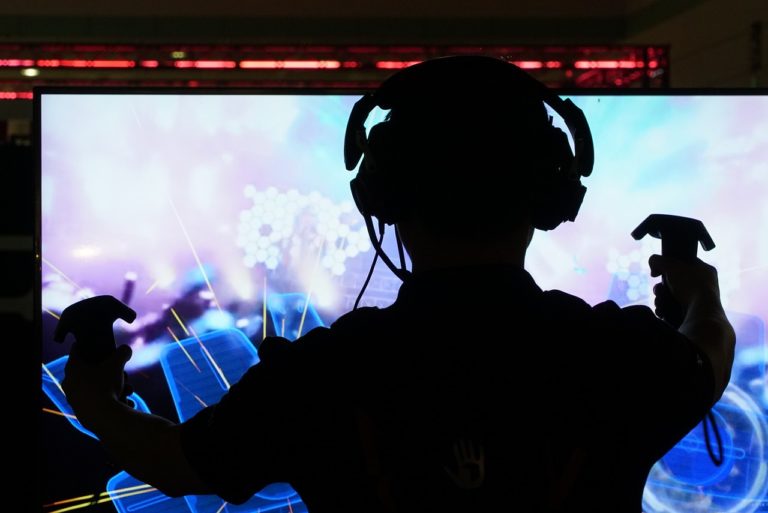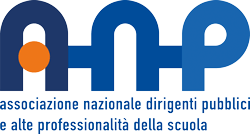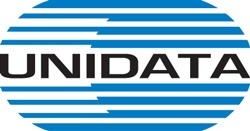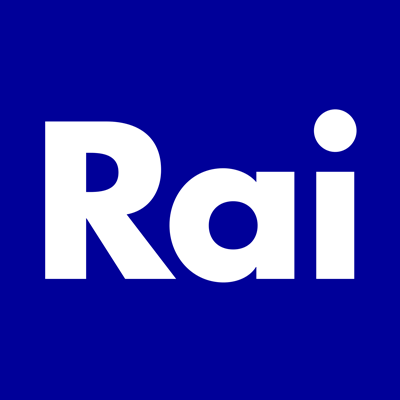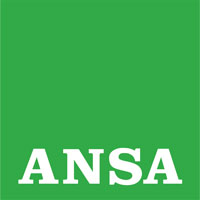Among the stands of MFR 2022, many projects hold immersive technologies as the real protagonists
These projects, realized by Universities, International Consortia and Makers, exploit the potentialities of immersive techs
Virtual and augmented reality, frequently called “immersive technologies”, are spreading in ever wider application field, overpassing the traditional borders of gaming and entertainment to find applications in the manufacturing, biomedical and health, design and architecture industries as well in the education one.
At Maker Faire Rome 2022 there was no lack of projects by Makers, Universities and International Consortia designed to exploit the potential of these technologies to promote social inclusion and new ways of designing and communicating space, making mobility infrastructures more efficient, rendering rehabilitation fun and engaging, or even making a journey through time going from prehistory to 15th century through the art of Andrea Pozzo.
Representing virtual space: digital models and visions of architectural complexity
A project that explores immersive technologies through famous architectures and complex spaces of invention, starting from one consideration: the metaverse is now a very widespread concept and communication takes now place through new channels, losing the typical two-dimensional character of pictures, renders and videos.
Therefore, the Metaverse becomes a paradigm of representation and knowledge of architecture and its complexity. Current technological developments have also changed the way space is communicated, opening the door to a communication that declines drawing and representation in virtual environments.
Augmented reality and Virtual reality are thus tools that allow a new understanding of space. A project by Daniele Calisi, architect and researcher in the Department of Architecture of Rome Tre University, with Stefano Botta and the contribution of Alessandro Cannata and Massimiliano di Paolo.
 MEMEX: Memories for inclusive digital storytelling
MEMEX: Memories for inclusive digital storytelling
MEMEX is a three-year interdisciplinary project design to help marginalized individuals and communities to integrate into society through an augmented reality application and inclusive storytelling.
MEMEX provides inclusive access to tangible and intangible cultural heritage and, at the same time, facilitates meetings, discussions and interactions between communities at risk of social exclusion. Through AR-based tools, it brings together experiences and memories of the people of these communities, transforming them into stories to tell, enriching them with personalized digital content linked to the pre-existing European Cultural Heritage.
In this way, everyone has the opportunity to tell their own story and to be an active part of European society. The project was carried our by the MEMEX Consortium, made up of 9 partners across 6 different European countries: Italy, Spain, Portugal, Sweden, Ireland and Belgium, carefully chosen for having specific, independent and complementary skills, useful for achieving the MEMEX objectives.
Infrastructures Digital Twin: VR & AR application
This project uses state-of-the-art technologies, such as VR and AR viewers, to analyze digital models of linear transport infrastructures.
The goal of the project is to show the advancement in the production of digital models of transport infrastructures and their assets. Through VR and AR viewers is possible to visualize these models in an innovative context, able to show the potential of these tools in analyzing digital twins of civil public works.
“Infrastructures Digital Twin” was realized by Fabrizio D’Amico, researcher at Roma Tre University, Luca Bertolini, Ph.d student in Civil Engineering at the Roma Tre University, and the research fellow of the same University Antonio Napolitano and Jhon Romer Diezmos Manalo.
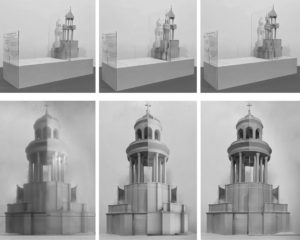 Analogic and Digital Augmented Reality
Analogic and Digital Augmented Reality
The illusory perspective, used by Andrea Pozzo to simulate a tabernacles on the plane of the wooden flames, can be considered an ante-litteram example of Augmented Reality, created with simple analogical tools.
The prototype presented at Maker Faire Rome 2022, make with 3D printing to facilitate its reproducibility and dissemination, makes it possible to combine different illusory models to evaluate their mutual coincidence: there a re different forms of perspective and they a re so different from each other. But how do they work? Through Augmented reality it is possible to reveal the principles of illusion!
A project curated by Michela Ceracchi, L. Baglioni, L. Carlevaris, M. Fasolo, J. Romor, M. Salvatore and G.M. Valenti.
Ciro Virtual Tour
“Ciro Virtual Tour” is a virtual reality application which, through a smartphone or a PC, allows the user to explore the environment where the Scipionyx Sanniticus – the dinosaur pet known as “Ciro” – used to live.
The entire environment has been realized through 3D digital modelling and eventually texturized. The results is a digital paleo-space at 360°.
The project has been realized by AURUS (Augmented Reality for Urban Systems), a open research group that gathers scientist, researches and amateurs interested in adopting new technologies in urban contexts with the support of University of Sannio’s paleontologists.
The aim of AURUS researches is directed towards the most innovative dimension of the available technology, which are Augmented and Mixed realities. A second goal shared by the group is the use of opensource platforms and software environments to support a widespread and collaborative access to the development of projects and a free distribution of the developed applications.
 Myndek: Virtual Reality based rehabilitation
Myndek: Virtual Reality based rehabilitation
The Myndek project is born from the will of putting the experience in the fields of Virtual reality and neurosciences to the service of people who are following a rehabilitation path.
Through gamification, even the most repetitive tasks can become funny and entertaining experiences. This software does not want to substitute traditional therapies, but instead to support the work of therapists with a innovative tool thar allows them – by using a portable helmet – to explore infinite combinations of scenarios and activities.
The project has been realized by Matteo Marucci, researcher in the field of neuroscience who has been working for years in the creation of Virtual reality in various field, research, architecture, marketing and events included.
Maker Faire Rome – The European Edition has been committed since its very first edition to make innovation accessible, usable and profitable for all. This blog is always updated and full of opportunities and inspiration for makers, makers, SMEs and all the curious ones who wish to enrich their knowledge and expand their business, in Italy, in Europe and beyond.
Subscribe our newsletter: we will select and share the most valuable information for you


